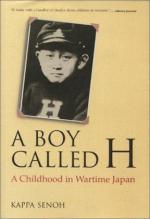|
This section contains 125 words (approx. 1 page at 400 words per page) |

|
1930s-1945: Increasing tensions between Japan and the United States lead to war. The United States is victorious after nearly four years of conflict.
Today: The United States and Japan are allies, and their alliance ensures political stability in East Asia.
1930s-1945: Japan is an authoritarian society in the grip of an imperialistic, militaristic way of thinking that glorifies war.
Today: Japan is a democracy based on Western-style political institutions.
1930s-1945: The Japanese emperor is considered divine. Emperor Hirohito reigns over his people as a distant, god-like figure, often pictured on a white horse.
Today: Japan retains its imperial family. But like surviving European monarchies, Prince Akihito, the son of Hirohito, is a figurehead and does not wield real political power.
|
This section contains 125 words (approx. 1 page at 400 words per page) |

|




